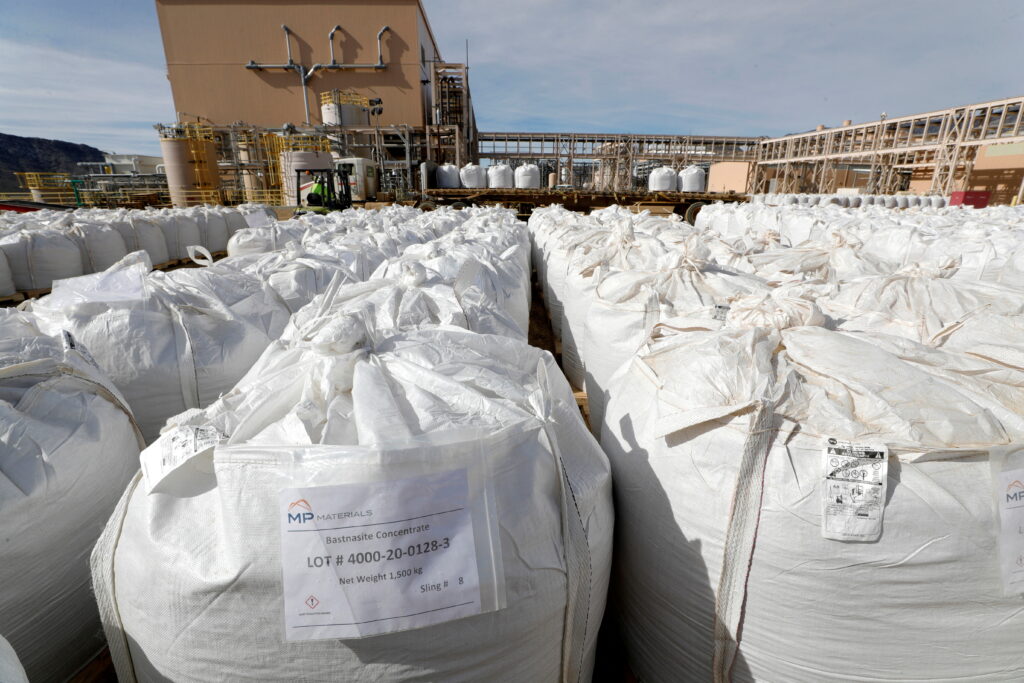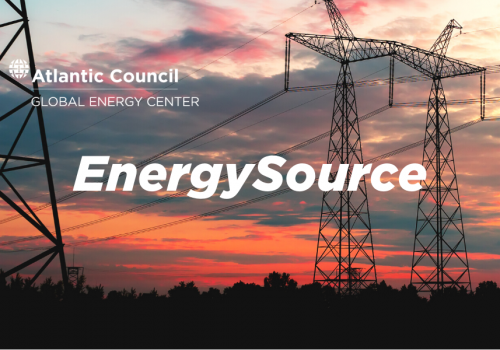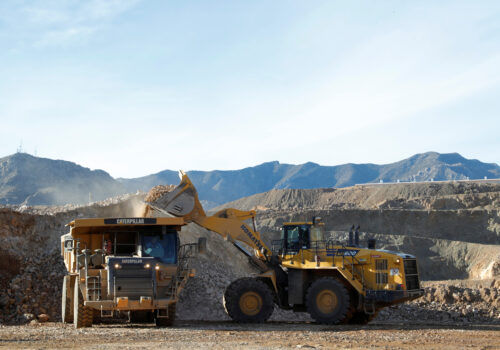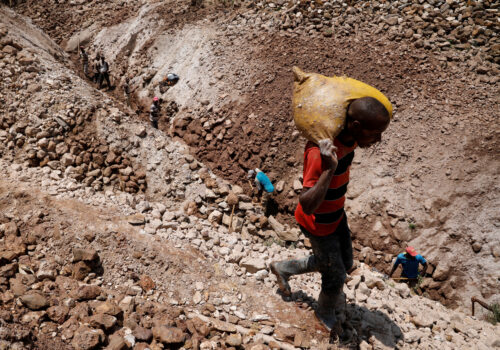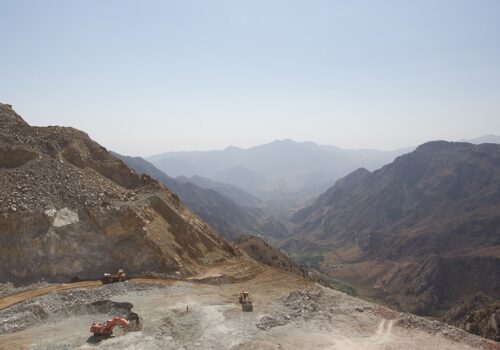For the first time in history, the United States is preparing to inject direct, large-scale funding into critical mineral stockpiling and supply chain resilience as a core pillar of national defense.
As part of the $150 billion defense funding boost that the House Armed Services Committee is including in the budget reconciliation bill, approximately $2.5 billion is specifically earmarked for the domestic production and stockpiling of critical minerals. An additional $20 billion is allocated to strengthening munitions manufacturing and the broader defense industrial base, which will also indirectly benefit critical minerals supply chains.
STAY CONNECTED
Sign up for PowerPlay, the Atlantic Council’s bimonthly newsletter keeping you up to date on all facets of the energy transition.
While this is a welcome and overdue move, the real test isn’t whether Congress can authorize new spending—it’s whether that spending can be structured in ways that create durable, investable markets.
This wouldn’t be the first time that funds are announced with great fanfare, but lacking clear commercial pathways, private sector follow-on investments never materialize. Projects stall, supply chains remain fragile, and strategic vulnerabilities persist.
To truly improve critical minerals security, Congress must structure these funds to create durable markets with sustainable demand signals, real commercial offtakes, and price stability. Merely handing out subsidies and building stockpiles that gather dust is not enough.
Here’s how Congress can get it right:
1. Use stockpiling wisely: Build “bid windows,” not just warehouses
Stockpiling critical minerals is essential for national defense, but traditional government stockpiles have often operated outside normal market dynamics. Congress must avoid designing a system where the US government simply buys and stores metals at opaque and inflexible prices, inadvertently distorting already underdeveloped markets.
Instead, a “bid window” structure—similar to how the Japan Organization for Metals and Energy Security (JOGMEC) operates—could ensure the stockpile acts as a price floor, rather than a ceiling, for market development. The United States could commit to buying minerals at a transparent, indexed floor price for a set volume each quarter, giving miners and refiners the demand certainty they need to invest while still letting private markets function freely above that level.
This approach would reduce the risk for business and investors of a price collapse, thereby attracting private investment and stretching taxpayer dollars further by stabilizing—rather than dominating—the market.
2. Focus on processing first: Without midstream, nothing works
Many policymakers are tempted to fund new mines, but without midstream processing capacity, mines are destined to become stranded assets.
Instead, Congress must prioritize refining, separation, and chemical conversion capacity inside US borders. It’s not glamorous work—but it’s the missing middle where China dominates and the West remains frighteningly dependent.
The reconciliation bill’s funds should catalyze small-to-midscale batch processing plants for metals like cobalt, rare earths, gallium, and tungsten that are faster and cheaper to deploy than megaprojects. The midstream is where the supply chain bottlenecks—and geopolitical leverage—truly lie.
A mine without processing isn’t a supply chain—it’s an orphan. The middle of the supply chain needs to be fixed first.
3. Use the right tool for the right stage: Grants where needed, blended finance where possible
Grants have been—and will continue to be—essential for building the critical mineral supply chain. Early-stage projects, new technologies, and first-of-a-kind facilities often cannot attract private financing without meaningful public support. Programs like the Department of Energy’s battery material processing and manufacturing grants have catalyzed activity where private capital alone would not step in.
But as projects mature, this funding model should evolve. Wherever possible, blended finance tools—such as partial guarantees, credit enhancements, or first-loss capital—can stretch public dollars further and bring private investors alongside.
Right now, there is not yet enough private capital chasing critical minerals to worry about crowding out investments with public spending. The bigger risk is failing to attract it at all. Structuring public funding in a way that can de-risk projects enough to make them bankable can crowd in private investment without making government funding the only path forward.
Otherwise, critical mineral projects will survive only as long as government grants flow, instead of becoming durable parts of national security supply chains.
4. Target strategic chokepoints: Not everything is “critical”
Finally, not every mineral deserves public backing. Defense dollars must focus on true chokepoints: materials heavily controlled by adversaries where supply disruptions would cripple US capabilities.
Tungsten, antimony, heavy rare earths, cobalt, and graphite fit this billing, but not commodities like aluminum or gold where deep, liquid global markets exist.
By staying disciplined about which materials—and which segments of the value chain—the US government funds, it can maximize strategic leverage without diluting impact.
A historic opportunity
The United States has a rare window to reset its critical minerals strategy. The $150 billion reconciliation bill could be the start of something transformative—but only if it is structured to create a real market pull, not just government push.
If prices can be stabilized without destroying private incentives, if the middle of the supply chain can be bolstered, and if private investment can be attracted in a durable way, the reconciliation bill may prove a real turning point.
Done right, this bill could lay the foundation for resilient, investable critical mineral supply chains that support national security long after the headlines fade.
Ashley Zumwalt-Forbes is a former US Department of Energy deputy director for batteries and critical minerals, co-founder and former president of Black Mountain Metals and Black Mountain Exploration, and co-founder and former senior advisor of Metals Acquisition Corp.
RELATED CONTENT
OUR WORK
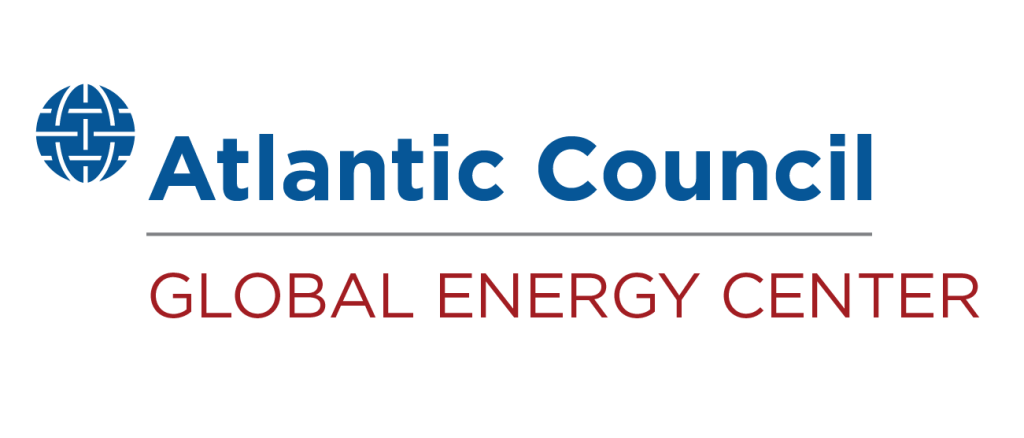
The Global Energy Center develops and promotes pragmatic and nonpartisan policy solutions designed to advance global energy security, enhance economic opportunity, and accelerate pathways to net-zero emissions.
Image: A shipping area is filled with 1,500 kg bags of bastnasite concentrate at the MP Materials rare earth mine in Mountain Pass, California, U.S. January 30, 2020. REUTERS/Steve Marcus
